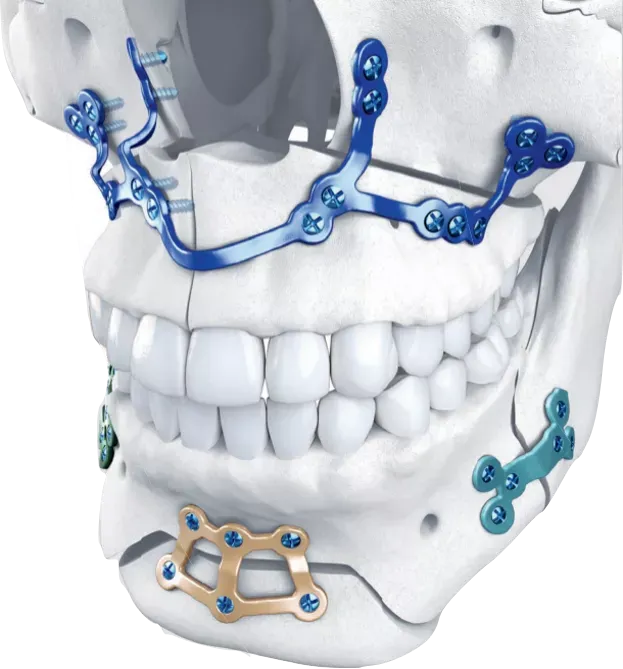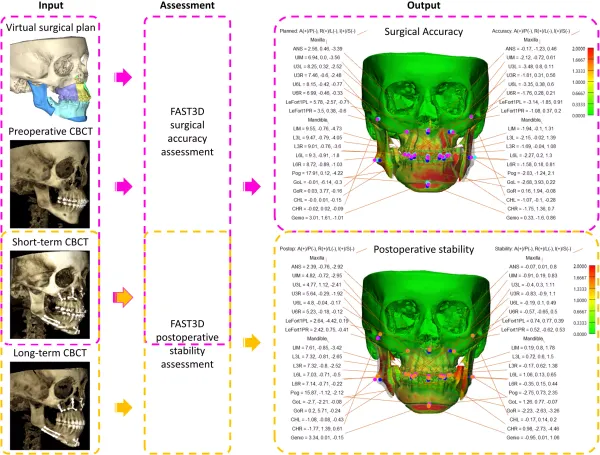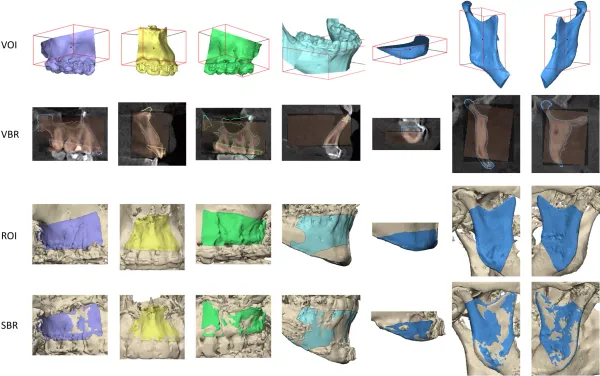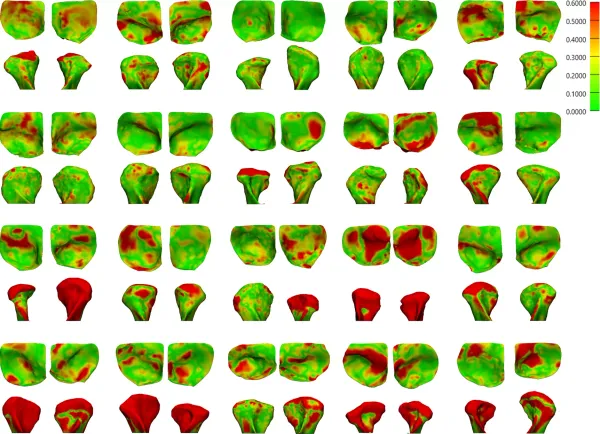Maxillary Patient Specific Implants in Bimaxillary Orthognathic Surgery: A Quality Assessment by Novel Automated Virtual Methods
Project Description
Orthognathic surgery is a type of jaw surgery where a surgeon cuts the bones of the upper and lower jaw and places them better. There are two ways they can put the bones in the correct place and keep them in place after the surgery. One way, called the "conventional method", is to use a 3D-printed guide called a splint to set the bones in the right place and then screw the bones together using metal plates that the surgeon bends into shape to fit during the surgery. Another way is to use a patient-specific implants (PSI) that has been 3D-printed in titanium beforehand that because of its unique shape both places and keeps all the bones in the correct place after they are screwed in. Both ways of doing it are golden standards, meaning they are already approved.
Measuring the accuracy of the surgery is done by comparing the positions of the bones after the surgery with the intended positions of those bones, according to the surgical plan. The closer the achieved position of each bone is to the intended position, the more accurate the result.
Measuring the stability of the surgery is done by comparing the positions of the bones after the surgery with the positions of the bones two years later. The less the position is changed, the more stable the result.
The goal of this clinical trial is to see how accurate and stable PSIs are in orthognathic surgery when the maxilla is split in 3 pieces, and to compare them with the conventional method in patients with overjet or overbite. The main questions it aims to answer are:
Does using PSIs provide accurate movements of the maxilla pieces?
Does using PSIs provide more accurate movements of the maxilla pieces than the conventional method?
Does using PSIs provide stable movements of the maxilla pieces after 2 years?
Does using PSIs provide more stable movements of the maxilla pieces than the conventional method?
Participants will get orthognathic surgery as part of their normal orthodontic treatment.
Investigators will compare the PSI and conventional groups to see if the PSIs are more accurate than the conventional method.
Participants
PhD Fellow: Alexandru Diaconu
Affiliation: 3D Lab Denmark, University hospital of South West Denmark, Esbjerg, Denmark
Mail: Alexandru.Diaconu@rsyd.dk
Main Supervisor: Michael Boelstoft Holte
Affiliation: 3D Lab Denmark, University hospital of South West Denmark, Esbjerg, Denmark
Mail: Michael.Boelstoft.Holte@rsyd.dk
Co-supervisor: Else Marie Pinholt
Affiliation: 3D Lab Denmark, University hospital of South West Denmark, Esbjerg, Denmark
Mail: empinholt@health.sdu.dk
Funding
Faculty of Health Sciences, University of Southern Denmark
Department of Oral and Maxillofacial Surgery, University Hospital of Southern Denmark





